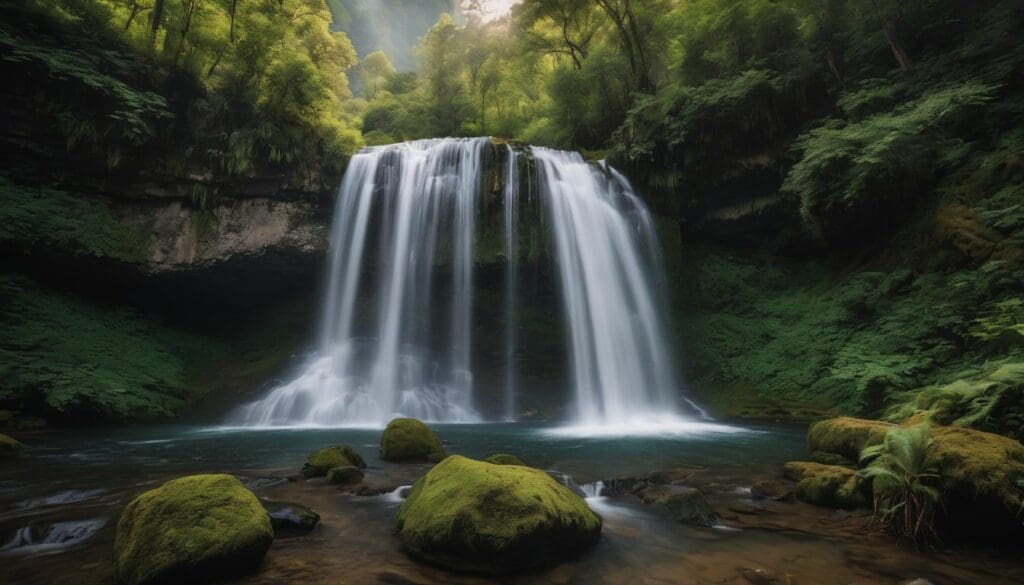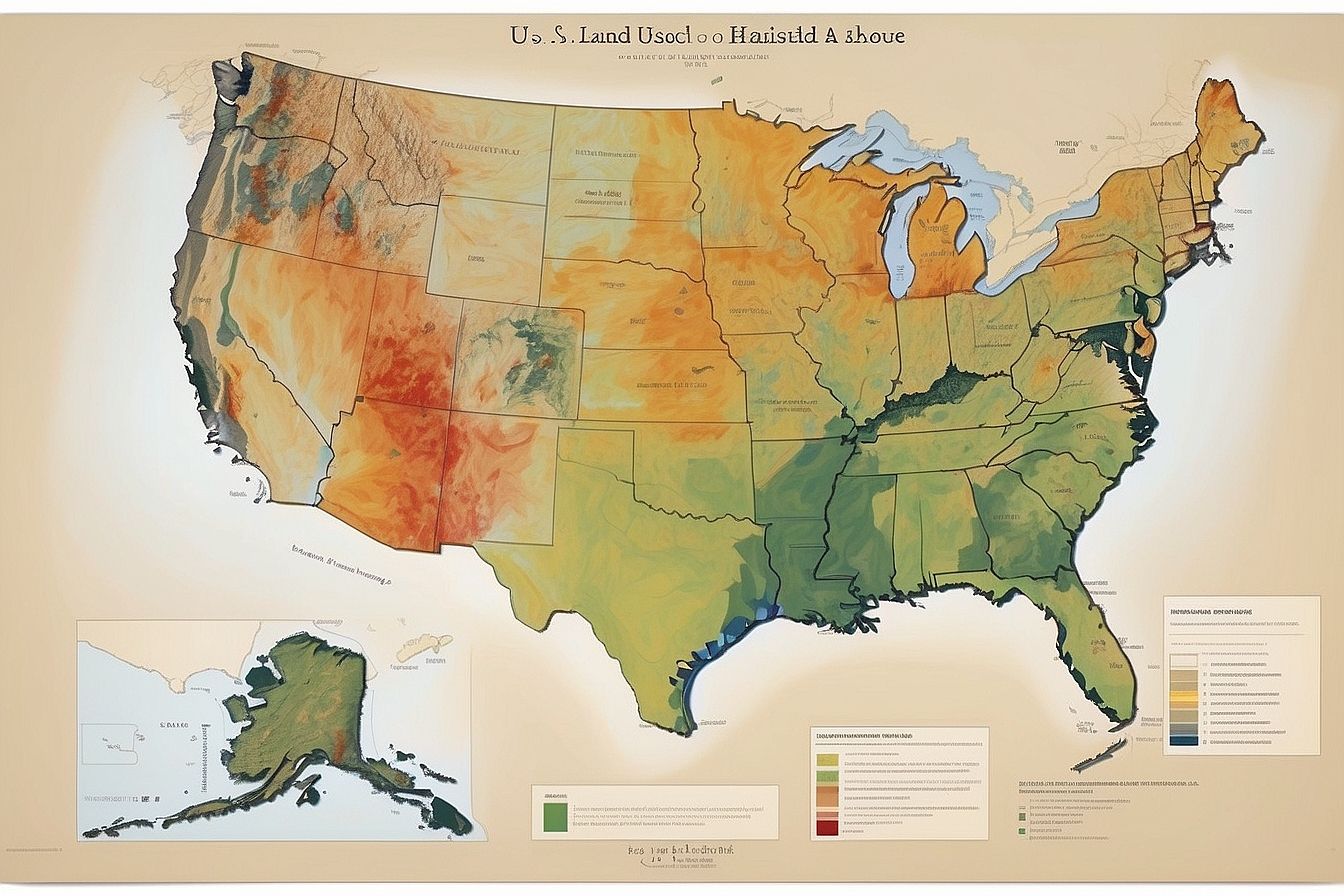We’re all too familiar with the disheartening news stories painting a picture of our natural landscapes in decline and diminishing water reserves. It’s not lost on us how grave these issues are, which is why we’ve thrown ourselves into thorough research.
What we discovered was quite sobering: an astonishing 70% of the Earth’s fresh surface water goes towards agriculture. Our forthcoming article takes a purposeful stride into understanding why it’s critical to marry land conservation with water preservation for the sake of our shared future.
Join us as we delve deeper and offer practical steps that could genuinely turn the tide.
Key Takeaways
- Protecting our freshwater sources involves managing land wisely and conserving natural areas around water bodies to keep the water clean.
- Collaborating with local communities, conservation groups, and governments helps create fair access to resources and builds solutions that consider everyone’s needs.
- Success stories in conservation include restoring grasslands with sustainable grazing practices, reforesting for healthier ecosystems, creating new national parks, and using nature-based solutions to manage water supplies effectively.
- Nature – based techniques like wetland restoration improve water quality while also providing habitats for wildlife and reducing flood risks.
- Working together on these issues is essential for a healthy environment where both people and nature can thrive now and into the future.
The Importance of Integrating Land and Water Conservation
Integrating land and water conservation is crucial for protecting freshwater sources, addressing infrastructure and equity issues, and collaborating to find sustainable solutions. It requires a bipartisan commitment to ensure the conservation of natural resources and environmental protection.
Protecting freshwater sources
We safeguard our freshwater sources by understanding how land use impacts water systems. It’s important to manage watersheds carefully, as they are crucial in providing clean water for drinking, agriculture, and outdoor recreation.
By conserving natural areas around rivers and lakes, we help maintain the quality of our water resources.
Our actions include promoting sustainable land development that avoids polluting streams and wetlands conservation to ensure that nature can filter our water naturally. We also support efforts in ecosystem preservation to keep wildlife flourishing, which is vital for a healthy watershed management strategy.
Taking these steps leads us towards more effective water resource management and protecting the lifeblood of our planet – fresh, clean water.
Addressing infrastructure and equity issues
To ensure the equitable access to land and water resources, we collaborate with local communities and stakeholders. By investing in infrastructure improvements such as sustainable irrigation systems and water treatment plants, we support environmental conservation while addressing social equity issues.
Our efforts aim to provide fair and efficient distribution of resources, fostering a balanced ecosystem for all stakeholders involved in agricultural production, wildlife habitat conservation, and open space preservation.
By integrating land use planning with an emphasis on equity, we enhance the resilience of ecosystems while promoting the well-being of local communities. This approach safeguards natural resource protection by establishing fair policies that benefit both the environment and society.
Collaborating to find solutions
Collaborating with local communities, government agencies, and conservation organisations is vital for successful land and water conservation efforts. Sharing knowledge and resources allows us to develop comprehensive solutions that address the complex challenges of protecting both landscapes and water sources.
Involving stakeholders in decision-making processes fosters a sense of ownership and commitment to sustainable land use practices, ultimately leading to more effective conservation outcomes.
By working together, we can implement innovative strategies for habitat restoration, sustainable grazing, and nature-based solutions that benefit both the environment and local communities.
This collaborative approach ensures that our conservation efforts are holistic, integrated, and tailored to the specific needs of each landscape. Engaging with diverse partners enables us to leverage expertise from different sectors while fostering a shared responsibility for safeguarding our precious natural resources.
Success Stories of Land and Water Conservation
– Preserving the delicate balance of grasslands while supporting local ranchers has been a significant achievement in land and water conservation efforts. Restoring forests for ecosystem health, establishing new national parks, and implementing nature-based solutions for water supply have also showcased successful integration of land and water conservation practices.
Preserving grasslands while supporting ranchers
Grasslands are vital ecosystems that support diverse plant and animal life, and they play a crucial role in maintaining water quality and regulating the hydrological cycle. By preserving grasslands, we not only conserve natural habitats but also safeguard freshwater sources.
Encouraging sustainable grazing practices among ranchers is essential for maintaining the integrity of these landscapes while supporting their livelihoods. Working together, we can ensure responsible land management that benefits both the environment and the communities that depend on these valuable resources.
Supporting ranchers in implementing sustainable grazing techniques preserves the ecological balance of grasslands while contributing to the conservation of water resources. This collaborative approach fosters a healthy coexistence between human activities and nature, benefiting both present and future generations.
Restoring forests for ecosystem health
Restoring forests is crucial for maintaining the health of our ecosystems. When we replant trees and restore forested areas, we enhance biodiversity and provide habitat for a variety of plant and animal species.
Forests also play a vital role in regulating climate by sequestering carbon dioxide from the atmosphere, contributing to global efforts to combat climate change. Furthermore, healthy forests help purify air and water resources, creating a more sustainable environment for both wildlife and human communities.
By actively participating in reforestation projects or supporting organisations that focus on restoring forest ecosystems, we can contribute to the overall health of our planet’s natural landscapes.
Establishing new national parks
Establishing new national parks is a crucial step in preserving biodiversity and protecting natural habitats. These designated areas provide safe havens for numerous plant and animal species, ensuring their survival for future generations.
By safeguarding these ecosystems, we can also promote environmental education and outdoor recreation opportunities, encouraging people to appreciate and respect the natural world around them.
National parks offer a valuable space for scientific research, enabling experts to study ecological systems and develop conservation strategies. Additionally, these protected areas contribute to mitigating climate change by sequestering carbon dioxide through the preservation of trees and other vegetation.
Nature-based solutions for water supply
Nature-based solutions for water supply involve using natural processes to manage and protect water resources. This includes techniques such as reafforestation, wetland restoration, and green infrastructure projects.
By allowing ecosystems to thrive naturally, these methods can improve water quality, reduce the risk of flooding, and enhance overall water security.
Implementing nature-based solutions can benefit both the environment and communities that rely on freshwater sources. It provides a sustainable approach to managing water resources while also supporting biodiversity and ecosystem health.
Sustainable grazing for natural landscape preservation
Sustainable grazing helps maintain the natural balance of landscapes, supporting biodiversity and preventing soil erosion. By carefully managing livestock numbers and their movement patterns, we ensure that grasslands remain healthy and vibrant.
This approach also sustains traditional ranching practices while safeguarding natural habitats for wildlife.
Preserving our ecosystems through sustainable grazing promotes a harmonious coexistence between agriculture and nature. It’s a vital part of land conservation, working in synergy with water resource management to create resilient landscapes for future generations.
Conclusion
In conclusion, integrating land and water conservation is critical for protecting our freshwater sources. Addressing infrastructure and equity issues is essential for the success of these efforts.
Collaborating to find solutions ensures a sustainable future for both our landscapes and water resources. With nature-based solutions, we can achieve a balance that benefits both ecosystems and communities.
Preserving our natural environments while supporting sustainable resource management is key to securing a healthy planet for generations to come.
FAQs
1. What is the intersection of land and water conservation?
The intersection of land and water conservation is where landscape ecology meets water resources management to protect natural habitats, ensuring both land and water are preserved together.
2. Why is it important to consider both land and water in conservation efforts?
Considering both land and water in conservation efforts is crucial because they are interconnected, affecting each other’s health. Properly managing one helps maintain the balance of the other.
3. How does landscape ecology contribute to conserving water resources?
Landscape ecology contributes to conserving water resources by studying how land use patterns impact natural processes, helping devise strategies that preserve soil quality which, in turn, supports clean and sustainable water supplies.
4. Can actions taken on land really affect bodies of water?
Yes! Actions on land can have a significant impact on nearby bodies of waters; proper land conversation measures ensure that pollutants do not enter streams or lakes thus protecting our vital aquatic ecosystems.





